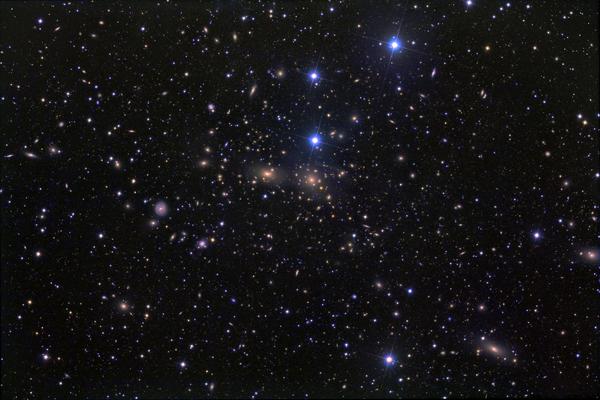A Day for Dark Matter

On and around October 31st when the world celebrates the ghostly and the unseen, SNOLAB will be no exception. Those engaged in dark matter research are inviting everyone to take part in Dark Matter Day this Halloween season. Dark Matter Day is an international initiative encouraging institutions to share the mystery of dark matter and to highlight the work being done to unravel it.
Consider all of the matter in the universe; this includes planets, stars, galaxies, black holes, dust, gas and us. Now consider that when we add up everything that we know of, it only makes up about 5% of all of the matter and energy in the universe. That’s right! The other 95% of the universe is invisible to us. Scientists believe about a quarter of this invisible stuff is dark matter and that the remainder is something called dark energy. Unusual, isn’t it?
If most of the stuff in the universe is invisible to us, then how do we know it’s there at all? Through years of looking out into space. Really. It was more than 80 years ago that astronomer Fritz Zwicky coined the term dark matter. After studying clusters of galaxies orbiting around one another, he concluded that there was not enough mass to account for them not to be flying apart. He called this missing mass in the galaxies, dark matter.
Fast forward to the 1970’s when physicist Vera Rubin was studying the rotation of stars in our own milky way and came to the conclusion that there must be some invisible mass keeping the stars in orbit; additional evidence for dark matter. Even more evidence comes from the phenomenon known as gravitational lensing, seen in images from space, when light from distant stars is bent by large amounts of invisible mass. The last few decades have seen scientists running experiments in deep underground labs and launching space-based detectors to better understand dark matter and the nature of our universe.
No question, dark matter is unusual stuff and nobody knows exactly what it is. Many physicists believe it may be a new type of particle called a Weakly Interacting Massive Particle, WIMP for short. This is the type of particle that scientists are trying to detect in experiments at SNOLAB. Going 2 km underground to SNOLAB, in Vale’s Creighton Mine, makes these experiments possible by removing much of the background noise from cosmic particles that harmlessly bombard the surface of the earth.
These experiments are international collaborations that range dramatically in size and scope but each have one thing in common; they are looking for the interactions of particles moving through a detector and colliding with the nucleus of an atom in a target material. These interactions can help to reveal information about what dark matter could be. From massive ultra cold setups to small novel experiments, scientists from around the world are moving the dark matter search forward and carrying out the hunt for the unseen. So, as you celebrate all things spooky and strange this Halloween, consider dark matter, the biggest unsolved mystery in the universe.
Blaire Flynn
SNOLAB Education and Outreach Coordinator
About Dark Matter Day:The intent of Dark Matter Day is to inspire and inform people about the science of searching for dark matter. Dark Matter Day was conceived by the Interactions Collaboration, an international group of particle physics communicators, to raise public awareness about the scientific pursuit of one of the universe’s most puzzling secrets. The first-ever global celebration of Dark Matter Day will take place on October 31, 2017. For more information visit www.interactions.org